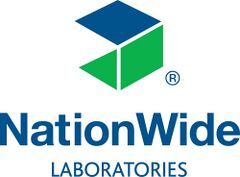Difference between revisions of "Canine adrenal sex hormone imbalance"
| Line 16: | Line 16: | ||
== Authors & References == | == Authors & References == | ||
[[NationWide Laboratories]] | [[NationWide Laboratories]] | ||
| − | [[Category:Investigation of canine and feline disease]] | + | [[Category:Investigation of canine and feline disease|ABC]] |
Latest revision as of 16:02, 28 April 2022
Adrenal sex hormone imbalance or congenital adrenal hyperplasia-like syndrome is a recently described disorder in dogs. The clinical syndrome is characterised by onset of alopecia between 1 and 5 years, symmetrical alopecia (affecting trunk, caudal thighs, neck or perineum), hyperpigmentation, changes in coat colour, quality and delayed regrowth of hair at the site of biopsy or trauma. Pomeranians and Chow Chows are predisposed. The pathophysiology of this presentation is somewhat controversial. Many of the previously described therapy responsive dermatopathies (GH responsive, castration response, Lysodren responsive, melatonin responsive etc) have very similar clinical presentations and perhaps the response to those therapies is non-specific. Realisation of these similarities has lead to the use of the term ‘Alopecia X’. The condition is thought to be due to a partial deficiency in glucocorticoid synthesis which results in the accumulation of the adrenal sex hormones that are precursors for these steroids but unfortunately, such enzyme deficiencies have yet to be demonstrated.
Adrenal sex hormones may also be useful when investigating male dogs who are attractive to other dogs of either sex.
Adrenal sex hormone status is investigated using a standard ACTH stimulation test.
17-OH Progesterone (17-OHP) has been identified as a sensitive marker and this, along with cortisol, is measured before and after ACTH administration.
An expanded adrenal steroid hormone panel is also available, including cortisol, 17-OHP, progesterone, oestradiol, testosterone and androstenedione. A standard ACTH stimulation test should be performed but at least 2 ml of serum or plasma is required to carry out all the analyses.
In normal dogs the basal 17-OHP level is less than 3.0nmol/l (usually undetectable (<1.0nmol/l)) and after stimulation with ACTH, healthy dogs show an increase up to 8.0nmol/l. Dogs with a possible sex hormone imbalance often have a raised basal 17-OHP level and show a significant
increase after stimulation.
